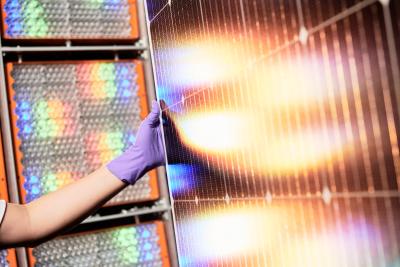Researchers develop semi-transparent perovskite solar cells with 21.68% efficiency
Researchers from the Korea Institute of Energy Research (KIER), Korea Research Institute of Standards and Science, Jusung Engineering and the Jülich Research Center have reported an advancement in the stability and efficiency of semi-transparent perovskite solar cells.
The semi-transparent solar cells achieved an impressive efficiency of 21.68%, which is said to be the highest efficiency to date among perovskite solar cells that use transparent electrodes. Additionally, they showed remarkable durability, with over 99% of their initial efficiency maintained after 240 hours of operation.






